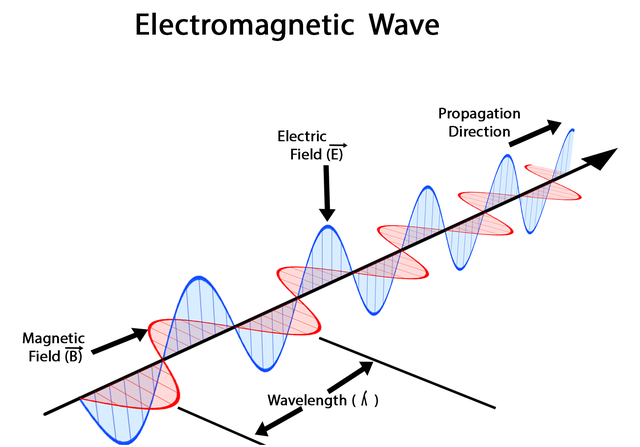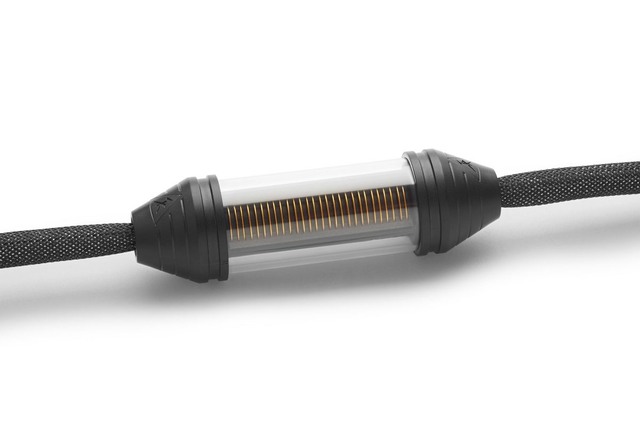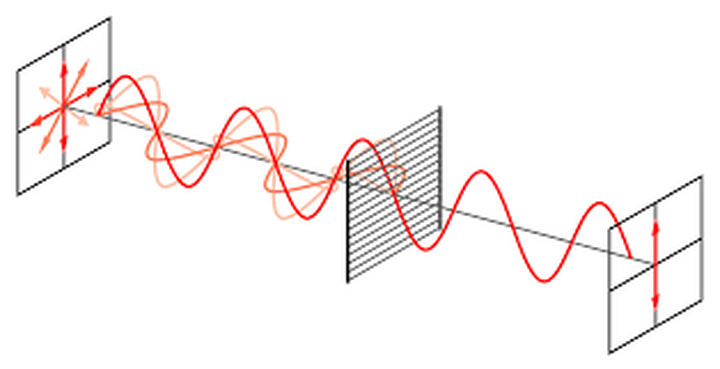
 |
|
|||||||
| Shunyata Research Designing Silent Systems for recording, film and music |
 |
|
|
Thread Tools | Display Modes |
|
#1
|
||||
|
||||
|
In the introduction to Dan's wonderful review of the amazing series of Shunyata Research Sigma (and Alpha) USB cables, I've been doing some thinking, as I am wont to do with my "scientist-type" brain from time to time.
As someone who has been using Shunyata Research products since 2009, when I was first introduced to them not by reading audio reviews or viewing dealer ad copy, but by actually reading Caelin's patents for AC power cord design (which contained a description of the eficacy of the use of rochelle salts for attenuating EMI and RFI), it was immediately apparent to me as a scientist, that Shunyata Research's product development is based on sound, deep electrical engineering & physics principles, principles based on the research and teaching of Faraday, Maxwell, and Tesla. It was from having read these patents that provided the motivation for me to buy my first two Shunyata Research products, a pair of Diamondback power cords. I was so taken aback by the remarkable improvement simply instailling these two power cords on my amp and preamp had on my system's audio performance, that of course, I wanted to know and understand more of 1) what and 2) how they were doing what they were doing. Which brings us to today's post. Dan's review got me thinking about the Transverse Axial Polarizer (TAP) device that is utilized on Shunyata's Sigma line interconnects and USB cables. I read what this unique design embodiment is supposed to do from the Shunyata Research web site: "TAP (Transverse Axial Polarizer) is a device that interacts with the electromagnetic field generated by the signal traveling along the signal cable. TAP improves the sonic performance of the cable by modifying the behavior of the electromagnetic wave that surrounds the signal cable. In effect, the TAP blocks longitudinal-oriented waves while passing transverse-oriented waves. The effect in sonic terms is like using polarized sunglasses to reduce reflected sunlight. Correcting polarization micro-distortion reduces what some call sonic glare." Having read Galen Garies' white paper recently on loudspeaker cable design, one of the key points I remember is that it is actually these electromagnetic waves that propoagate down our audio cables that carries the signal, NOT the movement of electrons. The 'propogation velocity" of this electromagnetic wave, VP, is dependent on a number of factors, not the least of which is that FREQUENCY has a notable impact on the VP, given by this equation. From Galen Garies: The velocity constant at a frequency is TIME, so the fact that we see a difference indicates a non- linearity across the usable audio band. The problem is that thing called propagation velocity (VP) or the speed that information travels at differing frequencies in the cable. The equation for audio is: Z = sqrt((R+j*2*pi*f*L)/(G+j*2*pi*f*C))
Doing some more research, here is a simplified represenatation of the electromagnetic wave travel travels down a conductor...my guess is that the fequency in the audio band has a direct impact on the wavelength shown here:  Coming back to TAP now, given that its function is to "blocks longitudinal-oriented waves while passing transverse-oriented waves." Here's a picture of the TAP device (photo copyright Shunyata Research)  Looking at it closely, my guess is it does something along what is shown here, though not exactly, as the orientation of the electromagnetic wave that would "attenuated" would be different; my guess is this figure should be rotated 90°, maybe, given the upper picture of an EM wave (?).  Looking at the figure above, this makes me think of a single-mode waveguide. Single-mode electromagnetic wave guides were first conceived in the 1890's and some of the first practical embodiments of them were developed at Bell Labs in the 30s. From Wikipedia: "Electromagnetic waveguides are analyzed by solving Maxwell's equations, or their reduced form, the electromagnetic wave equation, with boundary conditions determined by the properties of the materials and their interfaces. These equations have multiple solutions, or modes, which are eigenfunctions of the equation system. Each mode is characterized by a cutoff frequency below which the mode cannot exist in the guide. Waveguide propagation modes depend on the operating wavelength and polarization and the shape and size of the guide. The longitudinal mode of a waveguide is a particular standing wave pattern formed by waves confined in the cavity. The transverse modes are classified into different types: * TE modes (transverse electric) have no electric field in the direction of propagation. Thinking about this some more, my thought is that the TAP device functions in some manner as a "single-mode electromagnetic wave guide" to prevent these longitudinal EM waves from causing the "micro-distortions" we can actually hear. In this way, they act much like a pair of polarized sunglasses; they filter out the "glare" to let us see our subjects much more clearly. Its a brilliant analogy: thinking about how polarized sunglasses allow us to see a scene more clearly and with less distortion, or...by using TAP, hear a musical presentation in a more accurate, natural and engaging manner with less "glare". Ya gotta love it....no frou-frou, zobel networks, or myticism from "quantum tunneling" or anything like that. Just clear thinking from a deep understanding of the physics of electromagnetism, based on the foundations established by Faraday, Maxwell and Tesla.  
__________________
Lumin P1 streamer/DAC/preamp, Constellation Inspiration integrated TT: Michell Gyro SE MkII, SME V, Koetsu Urushi Vermilion, EAR324. Harbeth 30.2s, REL R-305, Shunyata Alpha V2 ICs, Alpha V2 SPs, Sigma XC, Sigma NRv2, Omega QR-s & Alpha NRv2 PCs, segmented Altaira SG stack w/ Alpha & Omega CGCs, Everest 8000 PD. Remote Server Room: Uptone EtherREGEN, AfterDark Master Clock & LPS, Alita, Battle Angel, (Akasa NUC Roon Core), iFi DC Purifiers (for SMPS used for Alita & router), Shunyata Gemini combo power distributor & Altaira-type CG GP-NR hub, Venom & Alpha CGCs, Shunyata NRv14 power cords for digital components. Last edited by Puma Cat; 06-20-2019 at 07:13 PM. |
|
#2
|
|||
|
|||
|
OK, Puma, very impressive. I think I understand. What components is you first Sigma NR going to connect?
|
|
#3
|
||||
|
||||
|
Quote:
 I wish that I could afford the Sigma line of products, but alas, they are well above my "pay grade". I'm retired now and live on, as my financial planner puts it, a "fixed cash flow". Maybe some time in the future, I can snag a used Sigma cable if funds permit. I wish that I could afford the Sigma line of products, but alas, they are well above my "pay grade". I'm retired now and live on, as my financial planner puts it, a "fixed cash flow". Maybe some time in the future, I can snag a used Sigma cable if funds permit. The thing is, you don't see much in the way of Sigma cables on the used market. I think the reason for this is, that while they are not what one could classify as "inexpensive", neither are they in the stratospheric price ranges of cables from other manufacturers. And for the folks that buy Shunyata Sigma cables, they provide performance that is so good that they are "end game" for their owners, so...they don't sell them. If I were to make a significant investment in Shunyata products right now, it would be to have my Triton V1 upgraded to V3. That would pay the biggest dividends "across the board", so to speak.
__________________
Lumin P1 streamer/DAC/preamp, Constellation Inspiration integrated TT: Michell Gyro SE MkII, SME V, Koetsu Urushi Vermilion, EAR324. Harbeth 30.2s, REL R-305, Shunyata Alpha V2 ICs, Alpha V2 SPs, Sigma XC, Sigma NRv2, Omega QR-s & Alpha NRv2 PCs, segmented Altaira SG stack w/ Alpha & Omega CGCs, Everest 8000 PD. Remote Server Room: Uptone EtherREGEN, AfterDark Master Clock & LPS, Alita, Battle Angel, (Akasa NUC Roon Core), iFi DC Purifiers (for SMPS used for Alita & router), Shunyata Gemini combo power distributor & Altaira-type CG GP-NR hub, Venom & Alpha CGCs, Shunyata NRv14 power cords for digital components. Last edited by Puma Cat; 06-20-2019 at 07:32 PM. |
|
#4
|
|||
|
|||
|
Roger that - we 'live' in similar spaces.
|
|
#5
|
||||
|
||||
|
Quote:
 in this hobby and I'm glad to see Shunyata sticking to their guns. in this hobby and I'm glad to see Shunyata sticking to their guns.- Buck
__________________
Library: Speakers: Avalon Acoustics Isis, Subwoofers: (2) REL Acoustics 212SE Amplification: D’agostino Momentum preamplifier, D’agostino S250 stereo amplifier Digital: dCS Rossini CD/SACD transport, dCS Rossini DAC/streamer/master clock. Analog: Brinkmann Taurus table, Lyra Etna Lambda, Audio Research Ref. Phono 3 |
|
#6
|
|||
|
|||
|
Quote:
|
|
#7
|
|||
|
|||
|
Don’t want to rain on your parade...but...
When a cable is used passing an alternating current at audio frequencies...the whole EM story does not apply. In such an instance stating that an EM wave carries the information in an audio cable is factually not correct. At radio frequencies a cable will start to act like a transmission line...and one could say that it is the EM wave that carries the signal/information. In plain terms the transmission line wants to become an antenna which in this use case is not really what you want. With digital signals, and the cables that carry them, it will be the transmission line behaviour that limits the practical bandwidth and hence the amount of information one can send. External factors barely come into play. As a student, I had a great time working with waveguides. We lovingly called it plumbing as this type of tramsmission lines are just hollow pipes that need to be tailored to length as to get impedance right. All that high frequency, high power radio stuff is pure magic and great fun. Last edited by JemHadar; 06-21-2019 at 09:57 AM. |
|
#8
|
|||
|
|||
|
Quote:
Your assertion about E&M concerns not mattering with AC current are not correct... Charges moving in space create a magnetic field. This is a basic law of physics. The magnetic field is perpendicular to the flow of current and in relation to the flow of current at that point in time alternating or not. Coils and poles in an AC motor display this nicely over time as they still become magnetized. Last edited by SCAudiophile; 06-21-2019 at 10:49 AM. |
|
#9
|
|||
|
|||
|
Quote:
Alternating current at audio frequencies in a cable does not make it behave like a transmission line. With regard to your other remarks. I wrote that outside influences have little impact on transmission lines; it is one of the reasons why e.g. UTP (Ethernet) or Coax (@radio freq) are so effective in carrying signals over long distances in EM corrupted environments...on the other hand transmission lines if not designed correctly will act like antennas bringing havoc and doom to other signals. How electromagnetism comes into play is basically determined by frequency and power. I wouldn’t like to stand next to a short wave world broadcast transmitter curtain array antenna with a 6 foot metal bar in my hands. Although in principle the same (Thank you Maxwell), one can hardly compare an UTP cable with the business end of a high power (microwave) RADAR. Last edited by JemHadar; 06-21-2019 at 11:41 AM. |
|
#10
|
||||
|
||||
|
Quote:
But, this the purpose of this thread was to discuss how TAP might work; in essence, I was "thinking out loud" with the examples I gave, and I may be completely off-base with my assumptions and inferences. But maybe not... Perhaps others with greater expertise can jump in and contribute to the discussion of how the TAP design embodiment functions. The patent application for TAP specifically discusses the propagation of electromagnetic waves. It kinda looks like it might be example of a single-mode waveguide but I could be completely wrong and would welcome to be informed/corrected. As for waveguides, not all of them are tubes. The perforated grill that covers the front window of a domestic microwave oven is a zero-mode wave guide to prevent microwave radiation from escaping. Anyhoo, back to the transverse axial polarizer... 
__________________
Lumin P1 streamer/DAC/preamp, Constellation Inspiration integrated TT: Michell Gyro SE MkII, SME V, Koetsu Urushi Vermilion, EAR324. Harbeth 30.2s, REL R-305, Shunyata Alpha V2 ICs, Alpha V2 SPs, Sigma XC, Sigma NRv2, Omega QR-s & Alpha NRv2 PCs, segmented Altaira SG stack w/ Alpha & Omega CGCs, Everest 8000 PD. Remote Server Room: Uptone EtherREGEN, AfterDark Master Clock & LPS, Alita, Battle Angel, (Akasa NUC Roon Core), iFi DC Purifiers (for SMPS used for Alita & router), Shunyata Gemini combo power distributor & Altaira-type CG GP-NR hub, Venom & Alpha CGCs, Shunyata NRv14 power cords for digital components. |
 |
|
|
| Audio Aficionado Sponsors | |